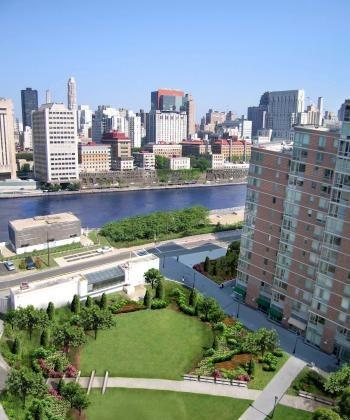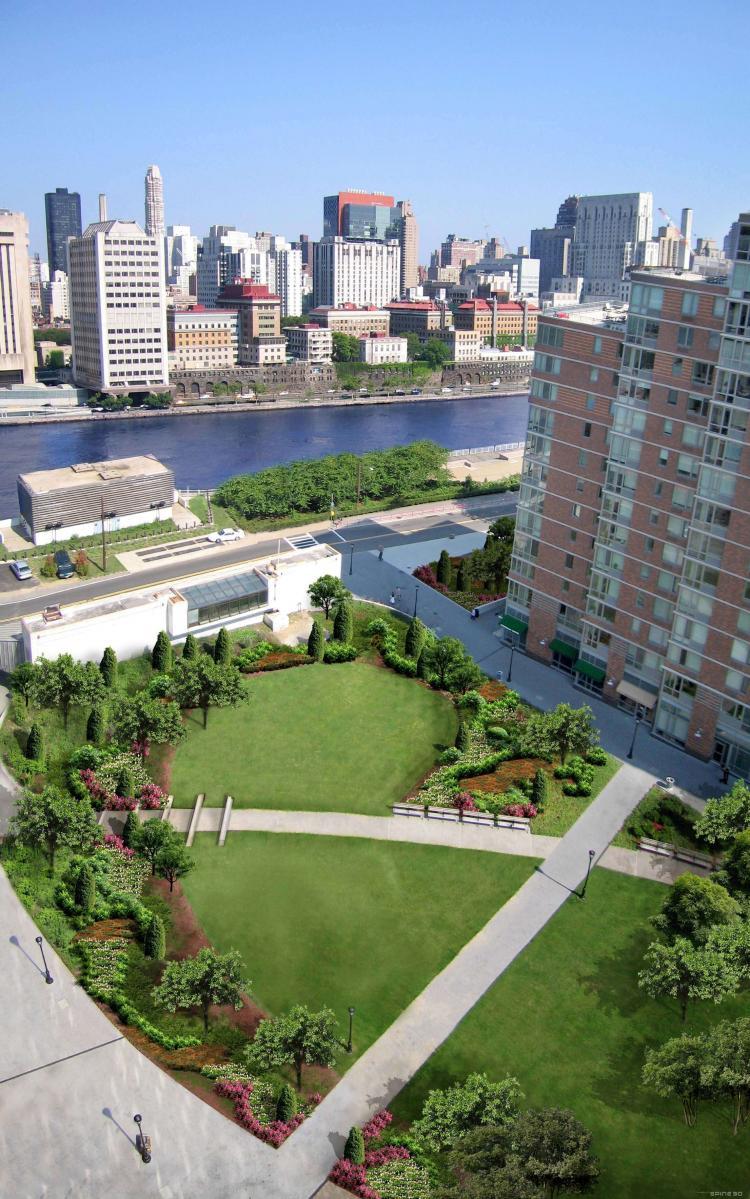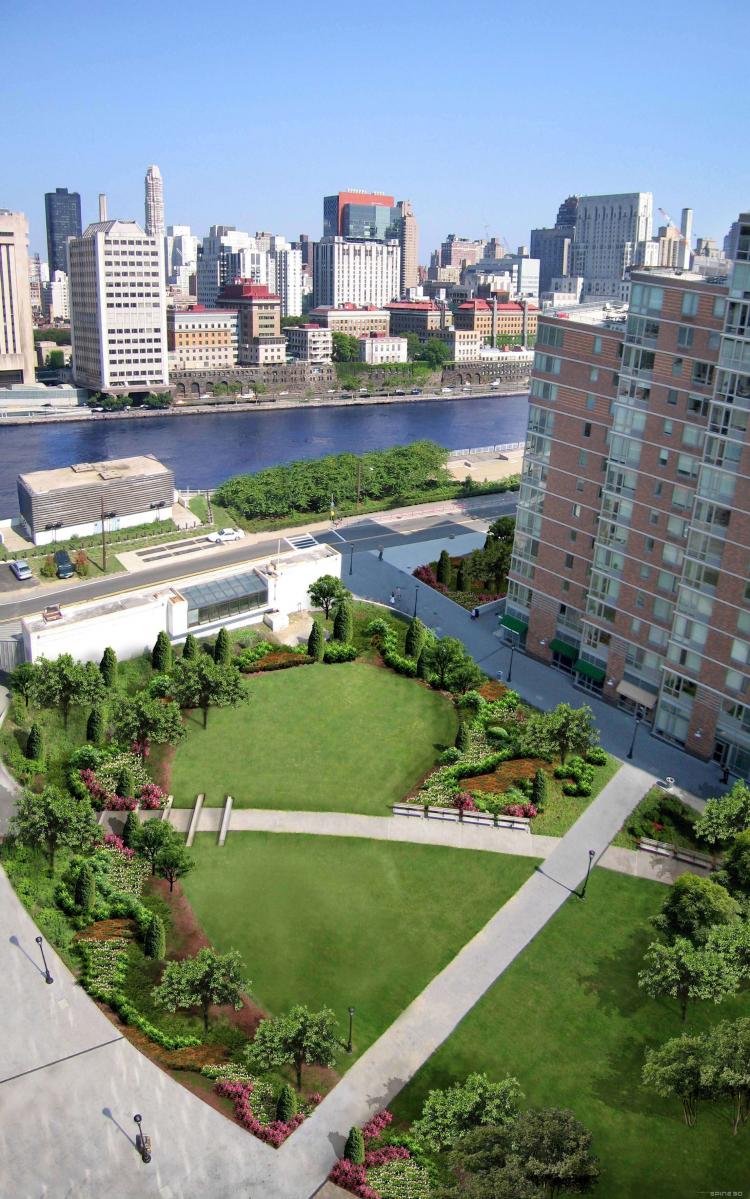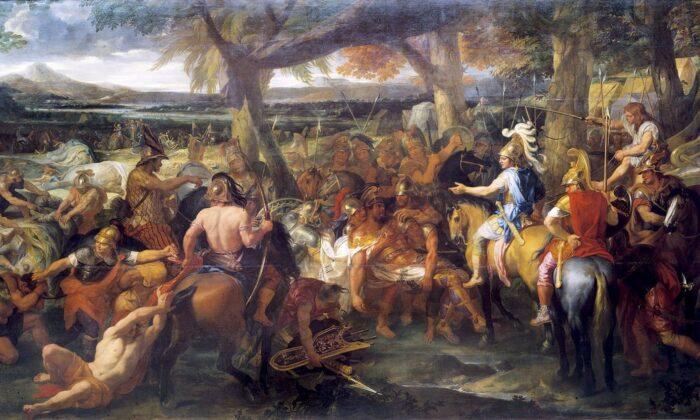NEW YORK—When is your neighborhood in Manhattan, but on a different island? Sounds like a riddle, but it’s the story of Roosevelt Island, a 150-acre strip of land in the East River that is quietly transforming into one of Manhattan’s most interesting neighborhoods.
The neighborhood today is described affectionately by residents as quiet, peaceful, safe, and clean.
“It’s quiet, it’s safe, very close to nature, there’s birds and butterflies, big open space, you can sit under a tree and it’s like living right next to the city but not in the city,” said Heather Mosher, a Roosevelt Island renter and a mother for two years. “I love that, especially if you have a child.”
The problem for developers of Manhattan’s little secret, is just that—no one knows about it.
“Our biggest challenge is to get people to come to Roosevelt Island and once they’re there, they love it,” said David Kramer, principal at Hudson Companies, in an interview at his office near Union Square.
Hudson along with Related Companies are developing 19 acres of Roosevelt Island into prime Manhattan residential property for below-Manhattan prices.
The underlying problem, Kramer says, is that people don’t know the Island can be easily reached by the F Train on the subway. Transportation to mainland Manhattan isn’t confined to the Roosevelt Island Tram, which has earned notoriety from being in movies like Spider-Man and for leaving passengers stranded above the East River in 2006. The Island is also accessible via the 59th Street Bridge, which connects the Island to Queens.
“People haven’t been there, or they think you can only get there by taking a tram, they don’t realize that you can take the subway. A lot of our marketing materials say take the F,” said Kramer.
Roosevelt Island, formerly known as Welfare Island, spent much of its last 200 years as a place for hospitals, a prison, and an insane asylum. By the 1970s, the asylum and prison were history and the State of New York leased the Island from the City, dropping the name Welfare and drawing up a master plan to divide the Island into two residential areas, Northtown and Southtown.
In recent years, much of Northtown was developed, including a luxury residential building known as the Octagon. Much of Southtown, however, remained unused, including a huge abandoned nurses’ residence. The 2000 Census put the population of the Island at around 10,000, many times smaller than other Manhattan neighborhoods.
With a State contract for big development, Hudson and Related demolished the abandoned nurses’ residence in 2000 and embarked on an ambitious transformation of Southtown into Riverwalk, a nine-building residential town of manicured green space, sports fields, and good retail shopping.
The latest building, fifth of nine, is Riverwalk Court, a 123-unit luxury condominium due to open Spring of 2009. One-bedrooms are going for as little as $575,000 and three-bedrooms for as much as $1.4 million.
With four of the nine Riverwalk buildings complete, two under construction, and a Duane Reade and Starbucks now open, Roosevelt Island is going through a period of major change that most residents have welcomed.
“It’s very funny, where a lot of areas are like ‘We already have too many Starbucks,’ on the island, when that first came, people began to feel like, ‘Hey, we’re part of civilization!’” writes Roosevelt Island 360 blogger Eric Schwartzman.
They’ve added a lot of stuff [in Riverwalk] a Duane Reade and good pizza shop, I go to the Duane Reade all the time,” said Mosher.
Challenges and Opportunities
Challenges and opportunities still lie ahead for Roosevelt Island.
Despite its relatively low population, Island residents already complain of overcrowding on the F Train so bad that they have to wait for three or four F trains to go by before they can get on.
It’s a problem common in popular neighborhoods that lie immediately outside Manhattan’s centers of business. Similar areas include Williamsburg on the L Train line and the Upper East Side on the 4, 5, 6 Trains line.
“There are plans underway to have a Ferry stop on Roosevelt Island, and they’re getting the permits, which will be great,” said Kramer. He said he also heard plans floated of leaving the first subway car on the F Train empty for Roosevelt Island riders—nothing firm on that though.
Another possible challenge, the current recession, has slowed business, said Kramer, but he remains unfazed because, in the long run, Roosevelt Island is a neighborhood that’s becoming more attractive to real estate buyers, not less.
“If you’re worried about where the market is going, whether it’s going up or going down, your safest investment is buying in a neighborhood that’s getting better, buying in a transitional neighborhood,” said Kramer.
“Even when the market is having a correction, and even as prices are going down, if the neighborhood you are in is getting better than that creates value over time.”
Other such transitional neighborhoods, Kramer mentioned include Fort Greene and Windsor Terrace in Brooklyn, and Washington Heights in Upper Manhattan.







